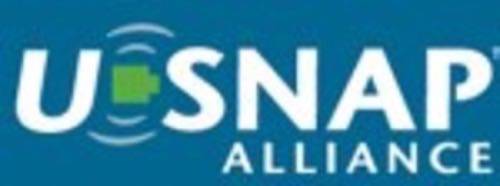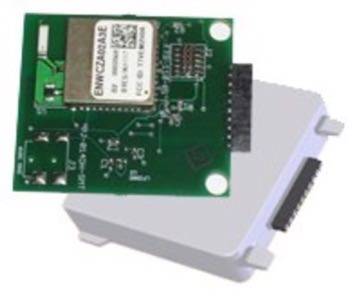Imagine a small chip you could plug into any device in your home that would enable it to communicate with your web-based electricity and device management dashboard. Or it could be trained to simply turn the device off at times of day when electricity was particularly expensive.

Such is the vision of the USNAP consortium, a group of companies including GEand Google that seeks to create a standard for the meter-to-device in-home monitoring stage of the promised smart grid. (“Enabling the device ecosystem for the smart grid,” is the group’s tagline.) USNAP released this week a proposed 2.0 standard spec for small modules that can be connected to devices to render them individually instrumented – measurable and manipulable as discrete sources of data. Where there is plug-and-play data, there is a platform for online innovation.
“This is the equivalent of USB for consumer products,” Barry Haaser of the USNAP Alliance says. USNAP is an acronym for Utility Smart Network Access Port and the consortium has been developing its technical specifications for three years. It has created the design for a little module, 55 mm long, with 10 pins and weighing no more than 40 grams – about as heavy as 17 pennies. The module is programmed to send and receive messages to and from the smart meter, in a standard format, using a wide variety of messaging technologies, including protocols like WiFi, and lesser-known systems with names like ZigBee, Z-Wave, RDS, and FlexNetWiFi.

Any companies that apply, are accepted to and pay the USNAP Alliance a $5,000 annual fee may manufacture USNAP modules.
USNAP focuses on the cost benefits of its technology, but interoperable device-level data availability could hold long-term promise for the development of innovative services as well, and thus a larger economy. That’s the hope behind the smart grid in general. The easiest way to explain its value is as a system for automated energy demand reduction. That’s very big, but the potential is much larger. Self-awareness of our mechanical world, with a web interface, might be one way to explain it.

Electrical consumption data, down to the device level, is today largely abandoned to what is sometimes called our data exhaust. Making that data manageable opens up a world of possibilities for new services dedicated to analyzing it, servicing patterns and deriving unanticipated forms of value from individual and aggregate information. In part on top of USNAP, for example, a whole other technical standard called Open Automated Demand Response (OpenADR) is being built, a technology that enables buildings to automatically respond to Internet-based signals that provide electricity grid prices and reliability messages.
Just as we’ve seen in the world of human-published social networking data, however, ownership of this resource is something that’s been too lightly considered for several years. If your refrigerator’s data is suddenly captured, leveraged and recognized as a thing of value to an emerging supply chain of services – what are your rights concerning control and exploitation of that data? It is your refrigerator, after all!
This is truly the read/write web beyond the individual gazing into the browser. The Internet of Things is expected to be a big part of the future, and technical standards that facilitate interoperable communication between devices is very important within that context.
USNAP has opened its “Serial Interface Specification Version 2.0 Public Review Document” for 30 days of public consideration and comment.





















